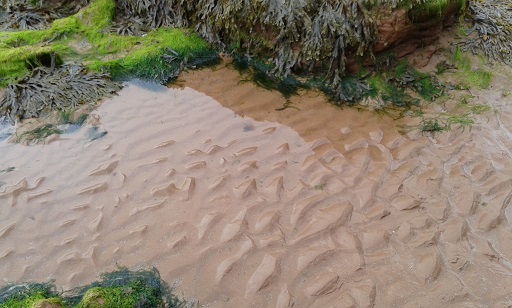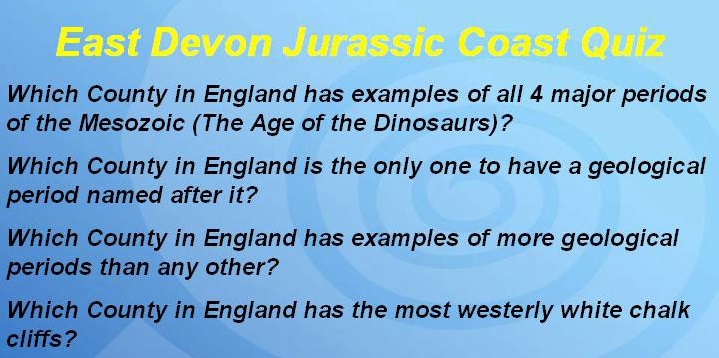Geology
Matters
Geology has made a real difference to the lives
of people in Beer and its visitors.
Beer is a gateway to The World Heritage Coast.
It stretches from Otterton Point in the West to Old Harry Rocks in
the East. It covers the whole of the Mesozoic Period; The Triassic,
the oldest of the three, the Jurassic in the middle and lastly the
Cretaceous.
Cretaceous comes from the Latin, creta, meaning
chalk. The Cretaceous played host to last of the dinosaurs;
which were probably driven to extinction by a meteorite collision
with Earth 65 million years ago. It is called the KT boundary
and is marked worldwide (though not here) by a thin layer of
iridium, a rare element. Cretaceous rocks stretch from Flamborough
Head, in Yorkshire, south to the white cliffs of Dover and west to
Dorset. They then fade away, due to erosion, and Beer is the
last significant outcrop of Cretaceous rock going west.
The white chalk at Beer stands out immediately
against the red Triassic mudstones on either side, making it a
memorable place. There is the fault line to the east of Beer.
Whitecliff (or Head of Whitcliff) has dropped about 60 metres
compared to the red cliffs of Seaton to the east, where the
Cretaceous has been eroded away leaving the Triassic exposed.
There is no Jurassic rock here. It is an unconformity.
The first Jurassic layers appear about 2km to the east of
Seaton.
Beer Head, a great navigational aid, protects
Beer from prevailing so’ westerly gales as well as
northerlies.
Beer sits in a syncline; a dip or fold, in the
chalk and each of the layers has had an impact on the life here,
the Greensands (with its chert beds), the Chalk with its Freestone
and flints.
The beach is made up of flints that have eroded
from the chalk, some rounded off by the action of the sea, some
more recently fallen with a knobbly appearance and some still with
a trace of cortex or skin. There are also lumps of
chalk.
You can find fossils in the Cretaceous, although
not as plentiful as the Jurassic.





